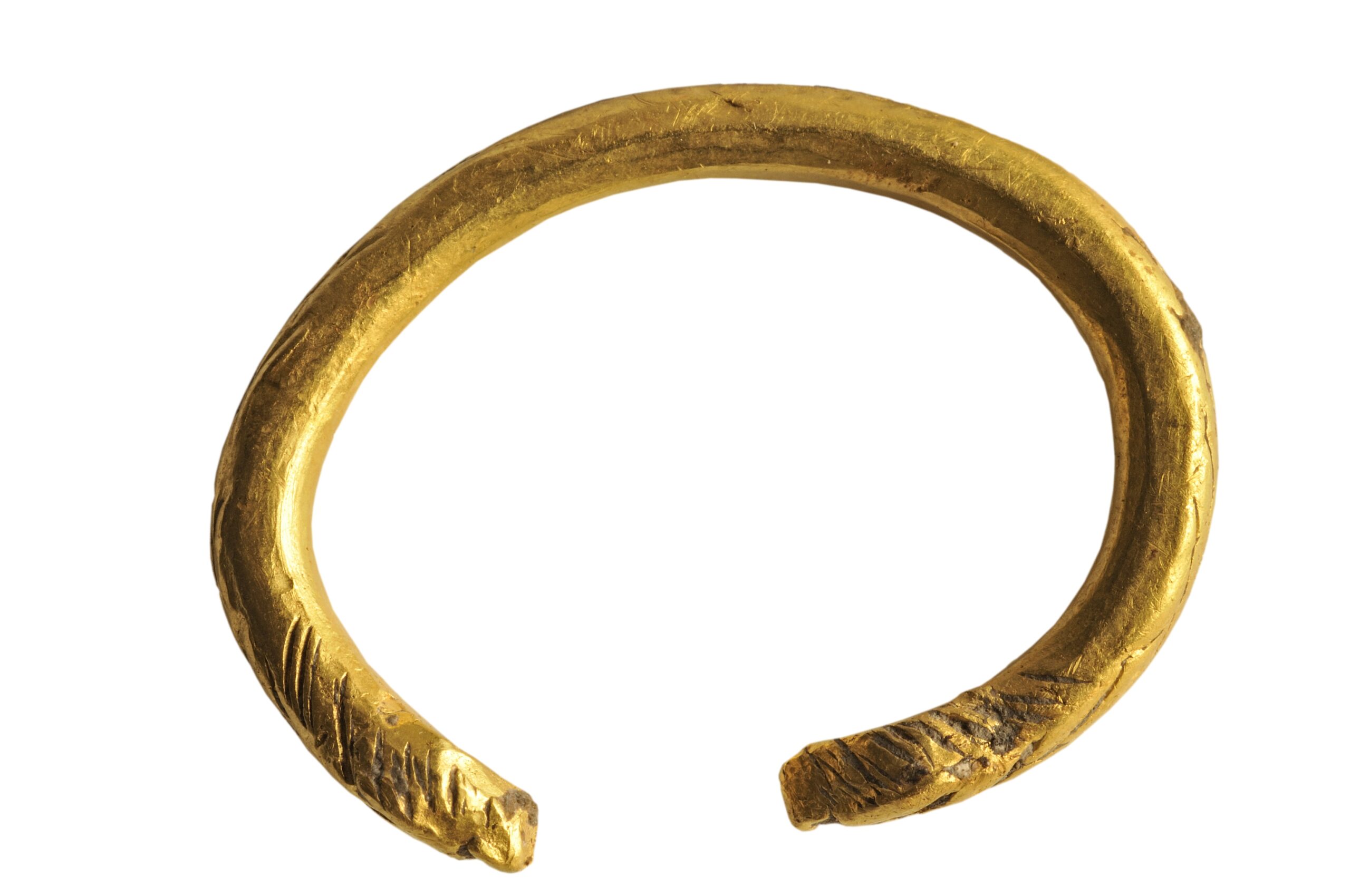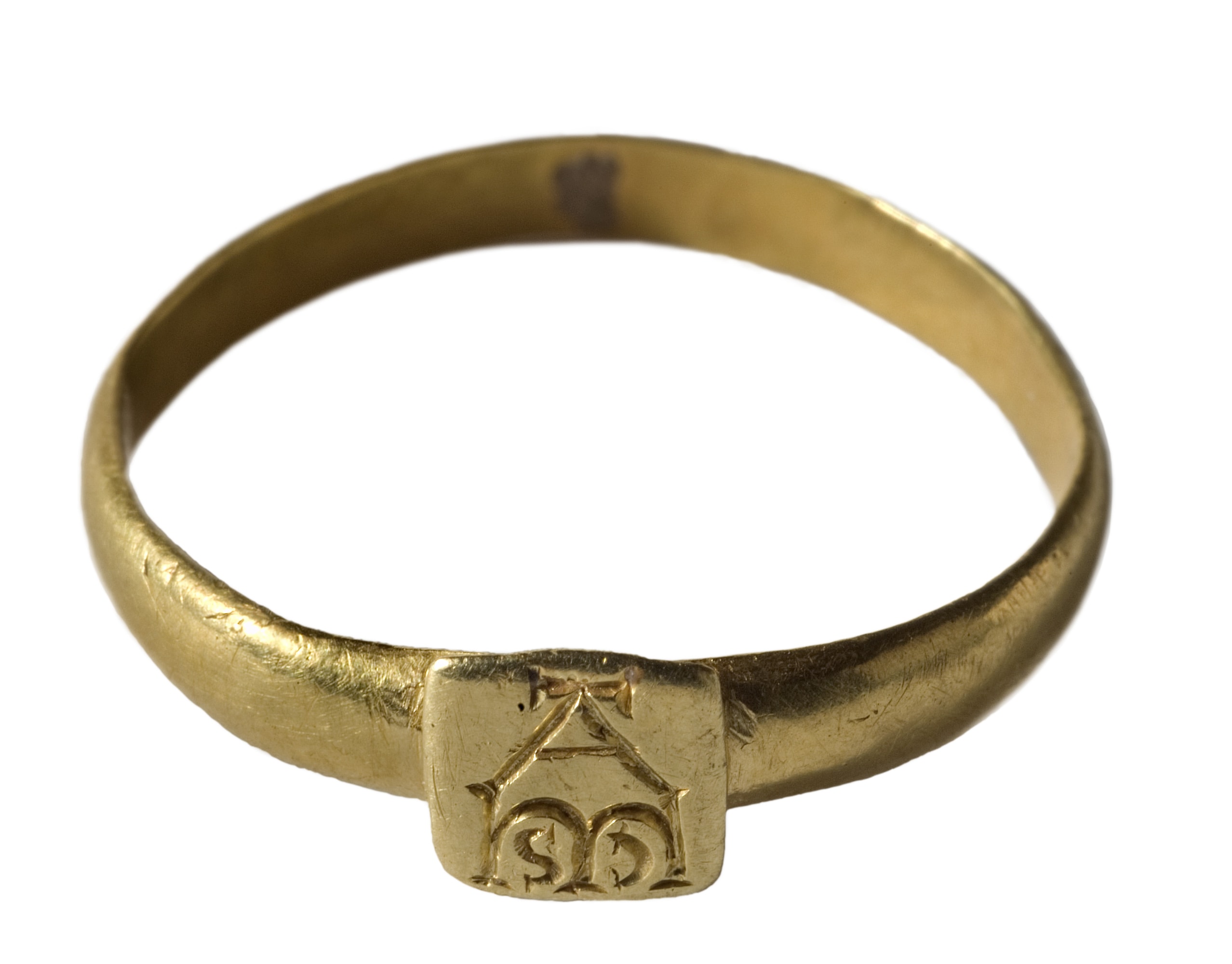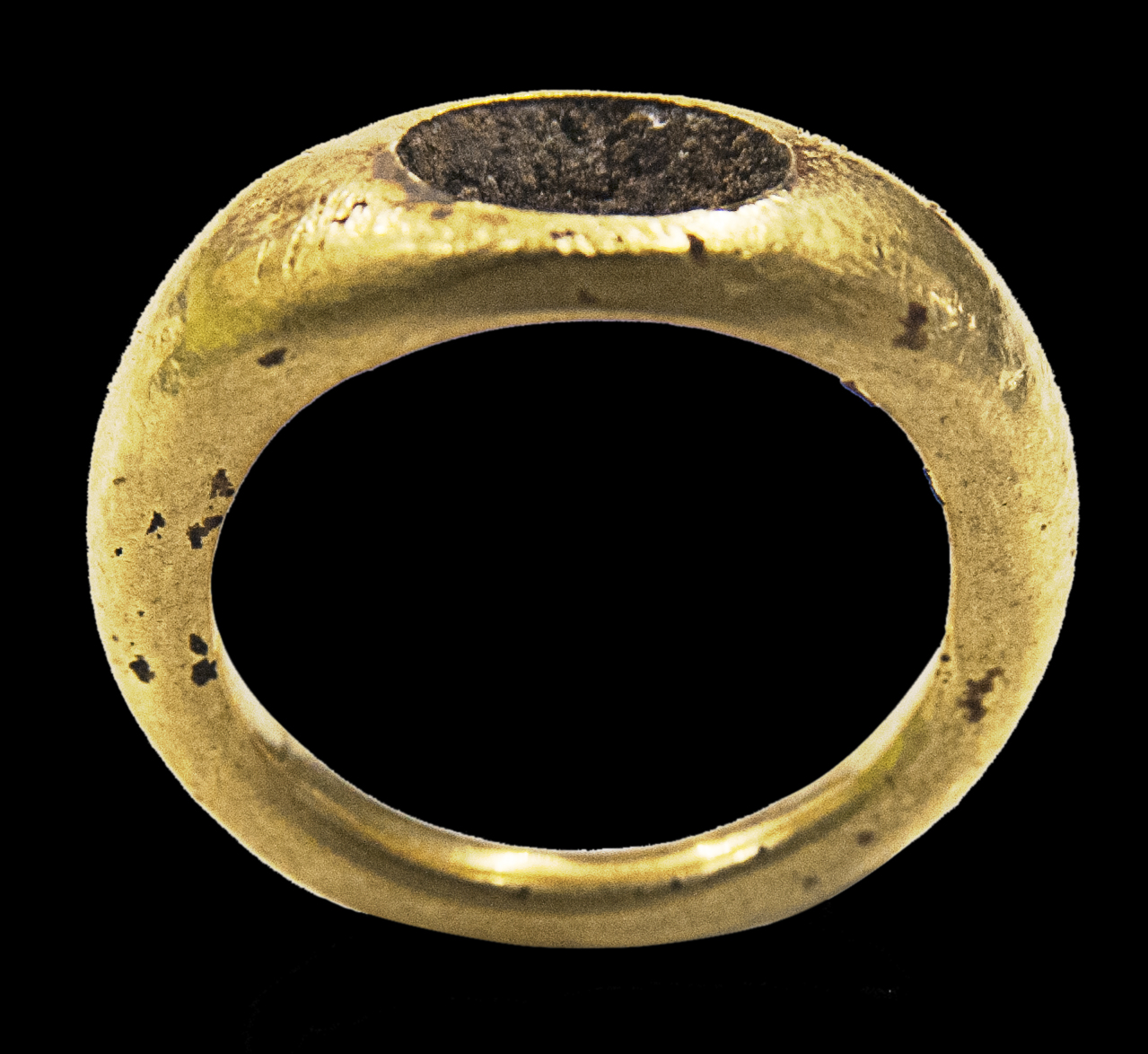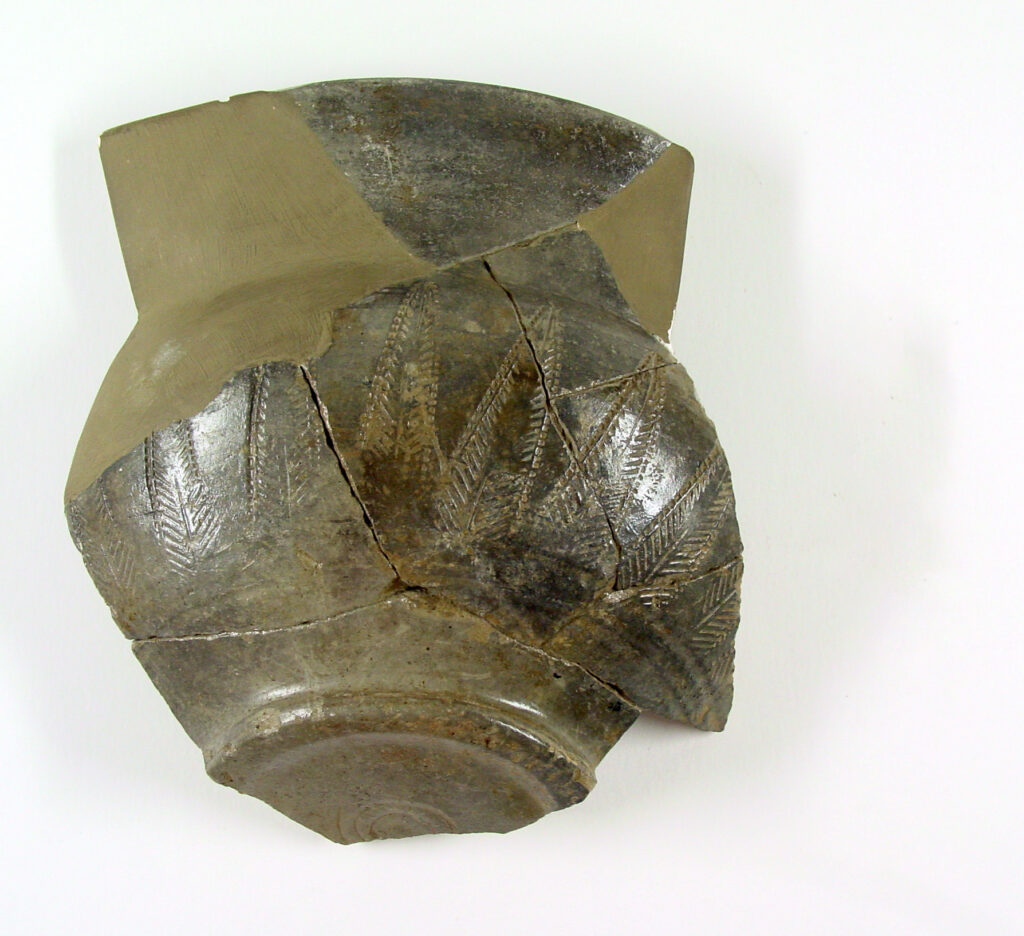- Object type
- ring
- Production date
- 1 / 100
- Fabric -
- Museum
- Museu de Badalona
- Culture
- Roman world
- Discovery location
- Ciutat romana de Baetulo. Sant Josep i de Rosés
- Materials
- gold
- Township
- Badalona (Europa, Espanya, Catalunya, Barcelona, Barcelonès)
- Technique
- casting, engraving
- Where is it?
- Exposició permanent
- Dimensions
- 1,7 x 1,5 cm






